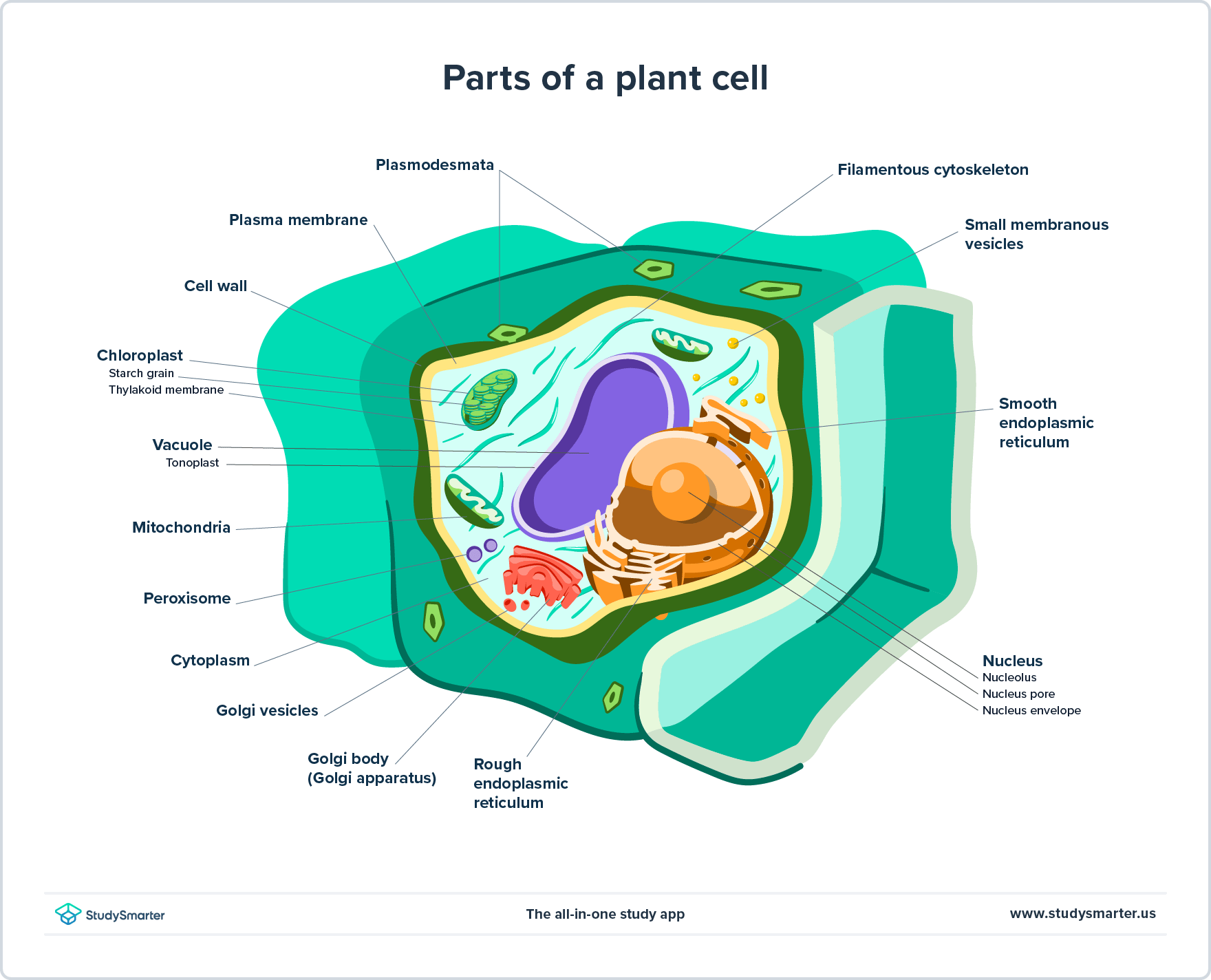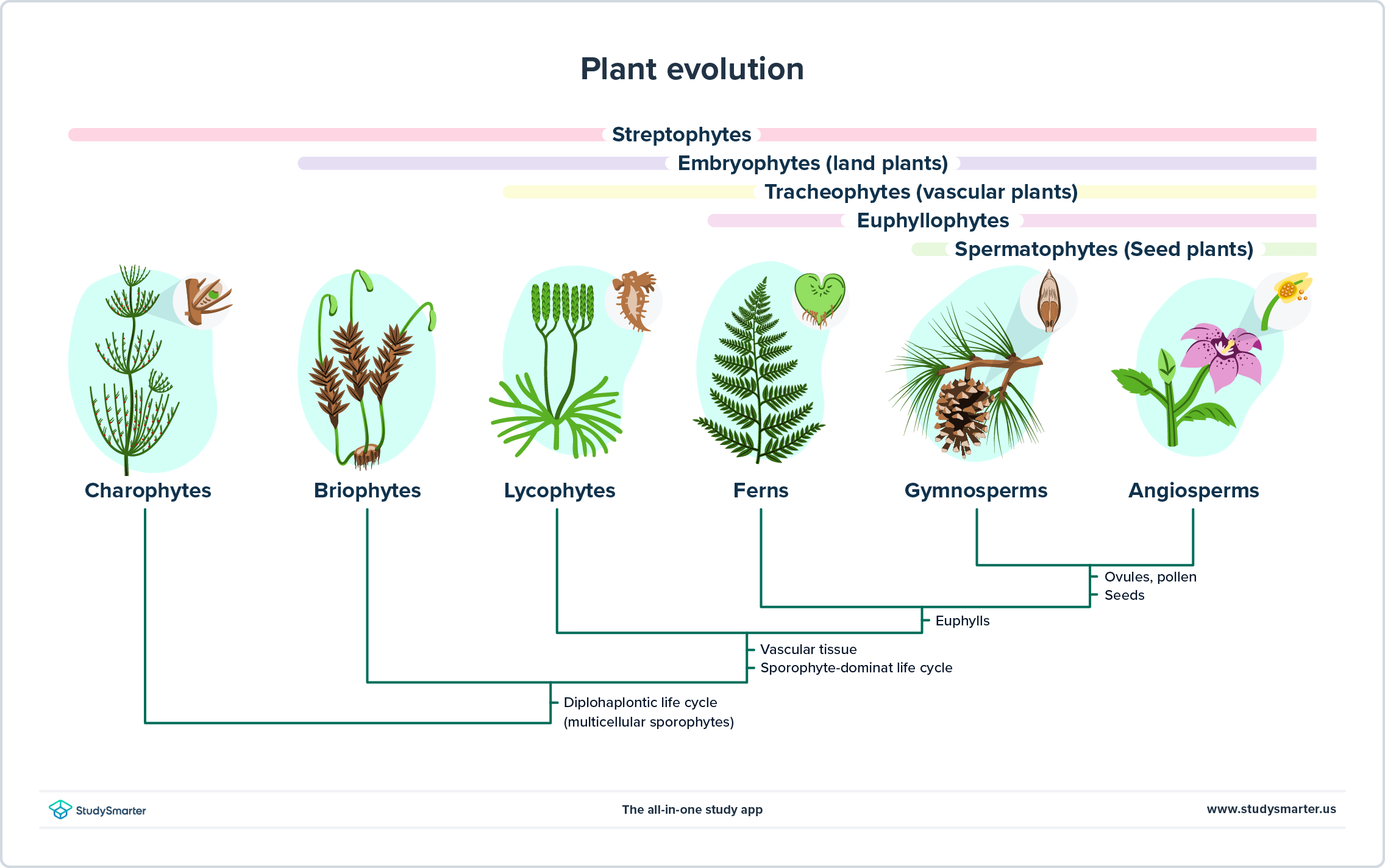
StudySmarter: Study help & AI tools
4.5 • +22k Ratings
More than 22 Million Downloads
Free
Plants: we eat them, use them for decoration, and even consider some of them signs of good luck. Without them, the air we breathe would be inhospitable to us, as they put much-needed oxygen into the atmosphere. Surely, plants provide us with many uses, so why wouldn't there be a whole branch of biology dedicated to them?



Lerne mit deinen Freunden und bleibe auf dem richtigen Kurs mit deinen persönlichen Lernstatistiken
Jetzt kostenlos anmeldenPlants: we eat them, use them for decoration, and even consider some of them signs of good luck. Without them, the air we breathe would be inhospitable to us, as they put much-needed oxygen into the atmosphere. Surely, plants provide us with many uses, so why wouldn't there be a whole branch of biology dedicated to them?
Plant biology is the branch of biology that deals with studying plants. In particular, plant biologists look at the evolution, life history, structure, and function of plants.
Plant biologists have many roles. Some study the chemical signals plants use to defend themselves, others may study the way the climate affects a plant's ability to reproduce.
Plant biology is a large branch of science that focuses on plants including, but not limited to, their evolution, life history, structure, and function.
Plant biology is a wide-reaching subject, but some categories receive more attention based on their importance to us and our interests. See below for more about the different categories of plant biology:
Evolution: We study the adaptations that plants have acquired which have helped them to diversify and occupy new environments.
Life history: We study the length of a plant's life and the style of reproduction.
Plant structure: From the chloroplast to the whole plant, plant structure can tell us about what makes a plant unique and how it survives in its environment.
Function: We study plant function to understand how plants work.
Plants are multicellular, eukaryotic organisms that have chloroplasts for photosynthesis. Scientists believe that the beginning of plants occurred when a eukaryote engulfed a cyanobacterium. Cyanobacteria are bacteria that can photosynthesize, and so it is believed this led to the development of the chloroplast in plants. This theory is called primary endosymbiosis.
Many plants that we traditionally think of as a "plant" would most likely fall under the category of "green plants", which have the pigment chlorophyll b (as well as chlorophyll a, which the rest of the plants have). Other types of organisms that are technically plants include red algae!
For the purpose of AP biology, we will be concerned with the land plants, which are a major group within the "green plants" that developed a number of adaptations to survive on land. These plants are typically split into nonvascular plants (mosses, hornworts, and liverworts) and vascular plants (trees, ferns, horsetails, and many more).
The plant cell, because it is eukaryotic, contains a membrane-bound nucleus and a number of organelles. Below, important parts of the plant cell are highlighted. You may notice that many of the organelles are also shared with animal cells.
 Figure 1. This diagram shows the basic parts of a plant cell.
Figure 1. This diagram shows the basic parts of a plant cell.
One quality of all land plants (nonvascular and vascular plants) is the life cycle mechanism, known as the alternation of generations. In the alternation of generations life cycle, a plant goes through both a multicellular diploid stage and a multicellular haploid stage.
Below, the basic steps of alternation of generations are highlighted, starting with the diploid plant:
The diploid multicellular plant, called a sporophyte, will produce spores via meiosis.
The spores will grow into a haploid plant, called a gametophyte.
The gametophyte will produce gametes via mitosis (NOT meiosis).
Two gametes when brought together, or fertilized, form a diploid zygote which will begin the process again.
Plants can reproduce both sexually and asexually, if you need a refresher on these types of reproduction visit the article on Heredity.

Note that plants produce haploid spores via meiosis, but gametes (sex cells) are produced via mitosis. Because plants have a haploid gametophyte generation, gametes must be produced by mitosis, unlike in other organisms (like humans), who produce gametes by meiosis.
Land plants are of particular interest to us and biologists because they had to evolve to be able to survive on land, meaning they have many adaptations to new problems faced on land, like desiccation (drying out), retaining structure, and getting water and nutrients from the soil.
Land plants can be split into two major groups: nonvascular plants and vascular plants. The main adaptation connecting all land plants is that their embryos have protection from drying out from maternal tissue. This adaptation allowed plants the ability to reproduce on land and was, therefore, an important first step for terrestrial plant species.
 Figure 3. Diagram of land plant evolution, from bryophytes to angiosperms, with important adaptations highlighted.
Figure 3. Diagram of land plant evolution, from bryophytes to angiosperms, with important adaptations highlighted.
Nonvascular plants do not have vascular systems and therefore grow only a few inches tall. Vascular plants all have vascular systems, which function to transport water and nutrients throughout the plants.
What are some ways that we protect ourselves from losing too much water? It's the largest organ in our body and, although we may apply moisturizer, it has its own defenses against drying out. You guessed it, it's skin! Land plants also sometimes have their own version of the skin, called a cuticle. Cuticles are waxy coverings that help to keep water from escaping a plant.
The structure and function of plants are two closely related categories of plant biology. Biologists who study plant structure and function may say they study "plant physiology", a formal term for these branches of plant biology. The structure of plants is often split into the root system and the shoot system. The root system includes the roots and the shoot system includes the stem and the leaves.
Roots have evolved to help to anchor a plant and absorb water and nutrients. They vary greatly from plant to plant, but they can grow extensive lengths to help keep plants anchored in the soil. Roots also have special extensions of their cells called root hairs. Root hairs help increase the surface area of the root so that more water and nutrients can be absorbed more efficiently.
Roots also have vascular tissue in them (the xylem and phloem) which allows them to transport water and mineral directly from the soil to the plant. Additionally, the root tip is a place of mitosis- meaning the root system of plants can grow as plants get larger.
The stems of the plant are the long, central plant body. For example, the trunk of the tree is the centralized plant body.
Stems are composed of vascular tissue (xylem and phloem) and other types of tissues, some of which are strengthened by proteins that provide support for the plant against outside forces (wind, rain, etc.).
Leaves have vascular tissue (veins) and photosynthetic tissue (mesophyll). The mesophyll tissue of leaves contain chloroplasts, which makes it the site of photosynthesis, or sugar production. Additionally, leaves are often thin and broad, allowing for a large surface area in which a plant can capture light energy from the sun (in the form of photons).
Leaves also have stomata, which are typically located on their undersides. Stomata are cell openings that are controlled by guard cells. Guard cells function by opening to let CO2 into the plant for photosynthesis and closing back up to protect from too much water getting out.
Plants are important model organisms for science. Scientists may study plant genes to understand more about genetics, evolution, or biochemical processes.
Additionally, plants are important parts of their ecosystems, so understanding their relationships with other organisms is important to keeping ecosystems resilient in the face of climate change.
Plants are also the number one source of food crops for most of the world including rice, corn, wheat, and soybeans. Scientists can genetically modify plants to make them more resilient against pests or other dangers to crops.
Plant breeding is the science of selecting for specific traits in plants by the creation of new subvarieties of plants. This may be done to increase resilience to pests in agriculture or to produce a desired aesthetic in horticulture.
Plants grow like other organisms through cell growth and mitosis. Plants also have a tissue that can turn into any type of tissue because it is undifferentiated. This is called meristematic tissue. This tissue allows for plants to continuously grow if the proper resources are available to the plant. Think large, old-growth forests where towering trees are hundreds of years old!
Plant biology is the branch of biology that deals with studying plants. In particular, plant biologists like to look at the evolution, life history, structure, and function of plants.
Plant biologists study a wide variety of topics related to plants. In particular, they may look at plant structure and function, the evolution of plants, or the life cycle and reproductive patterns of plants.
What distinctive structure does a plant cell have to avoid excessive uptake of water?
cell wall
Which of the following is the more common component of cell walls?
cellulose
What are plasmodesmata?
channels through the cell wall that allow intercellular communication
How can you know if the cell you are looking at under a microscope belongs to a plant?
absence of centrioles
Where can you find the middle lamella?
surrounding the cell wall
What function is similar in plastids and some vacuoles?
storage of nutritious molecules and pigment

Already have an account? Log in
Open in AppThe first learning app that truly has everything you need to ace your exams in one place


Sign up to highlight and take notes. It’s 100% free.
Save explanations to your personalised space and access them anytime, anywhere!
Sign up with Email Sign up with AppleBy signing up, you agree to the Terms and Conditions and the Privacy Policy of StudySmarter.
Already have an account? Log in